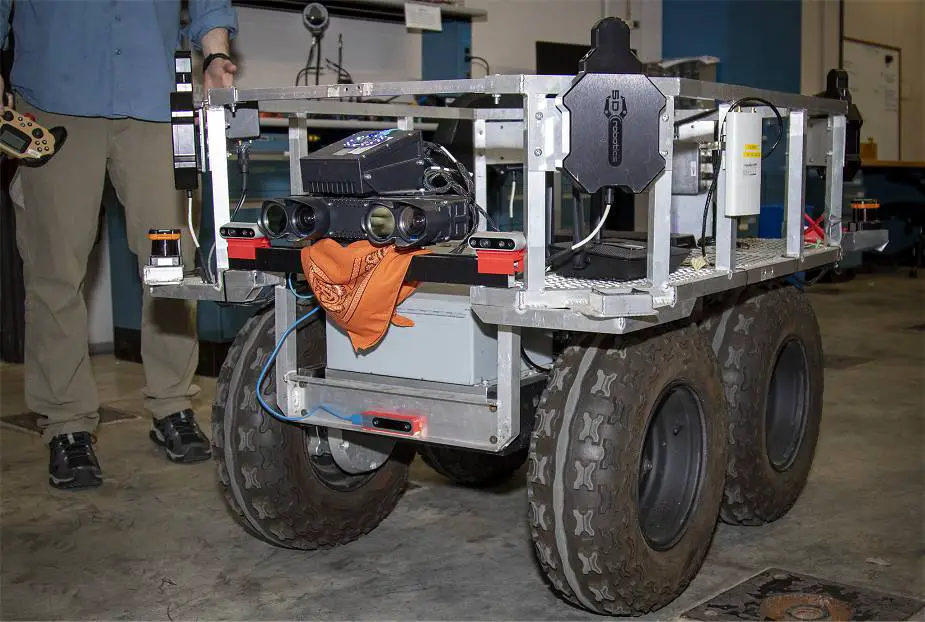U.S. Army Futures Command to develop semi-autonomous vehicle to transport military equipment
U.S. Army Futures Command in collaboration with the Nuclear and Applied Robotics Group lab at the University of Texas to develop a semi-autonomous vehicle that will be able to help transport equipment and do other dangerous tasks that are currently being performed by U.S. Soldiers.
Follow Army Recognition on Google News at this link

U.S. Army Futures Command collaborates with the Nuclear and Applied Robotics Group lab at the University of Texas for the team to develop a semi-autonomous vehicle. (Picture source U.S. Army Futures Command)
One of the top priorities that Army Futures Command is focusing on is the Field Artillery Autonomous Resupply (FAAR). The Army is teaming with academia and industry for innovations in autonomous and semi-autonomous robotic systems to support vehicle resupply operations.
Army Futures Command (AFC) is a United States Army command aimed at modernizing the Army. It focuses on six priorities: long-range precision fires, next-generation combat vehicle, future vertical lift platforms, a mobile & expeditionary Army network, air & missile defense capabilities, and soldier lethality.
US Army continues to find new solutions that can help soldiers on the battlefield. Today, soldiers of U.S. infantry units can carry different types of equipment and weapons that can reach a weight of 50 kg. Ammunition, medical supplies, food, water, it all adds up and when it does, soldiers slow down. Soldiers carrying packs that weigh a third or more of their overall body weight are significantly less mobile and arrive at their objective fatigued, reducing their overall effectiveness. Modern warfare, with anti-tank weapons, radios, and body armor has made a soldier’s load heavier, not lighter.
One of the key program of the US Army is the mobile Squad Support Systems. The mobile UGS that can keep up and interact with soldiers are being developed as ‘squad support systems’. They include both driverless vehicles of various sizes, and legged ambulating systems. One of the more publicized legged robots has been the Boston Dynamics’ Legged Squad Support System (LS3), a rough-terrain robot designed to travel with unmounted troops, carry 180 kg of gear over 30 km mission and last 24 hours. Similar systems under development include MIT’s Cheetah robot, Israeli Aerospace Industries REX 4x4 robotic logistic carrier and Lockheed Martin’s Squad Mission Support System (SMSS).
These robots are designed to assist soldiers with load carrying and evacuation and act as a mobile source of electrical power. The key limitations are in traversing uneven terrain and dealing with obstacles, which the different designs overcome to varying degrees. Further advances are also required in control, artificial intelligence, user interface, computer vision and system robustness to make the systems practical. Their cost may also slow down their adoption on a larger scale.


























